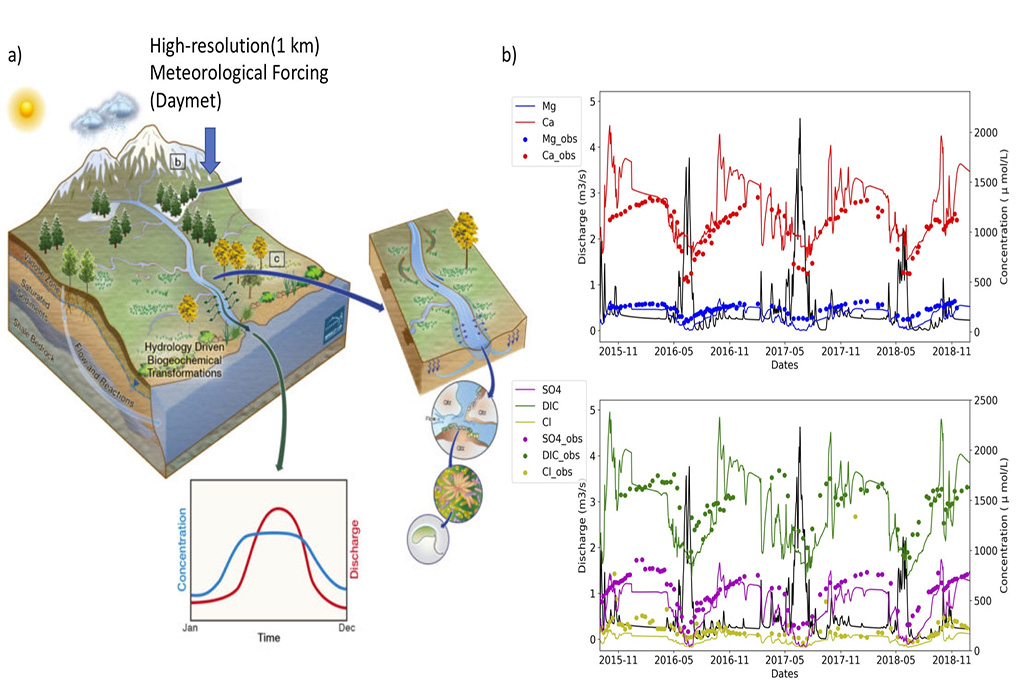Ecosystem processes occurring above and below-ground such as evaporation, infiltration, runoff or rock weathering interact in such a way that make water quantity and quality closely linked. Predicting how these processes can change with shifting weather and climate conditions is essential to a water-secure future–especially in regions like the Upper Colorado River Basin, which provides water for more than 40 million people.
Berkeley Lab scientists Zexuan Xu and Sergi Molins, with the Watershed Function Scientific Focus Area (SFA) and IDEAS-Watershed project teams, recently led two studies published by the American Geophysical Union to evaluate water flow and solute fate and transport in watersheds, a challenging area of study since a holistic watershed understanding requires a consideration of the complex interacting parts of the watershed, from the bedrock to the tree canopy.
“While many modeling tools are available to study water quantity in watersheds,” explained Zu, “there is still a lack of models that also consider processes affecting water quality.”

With this new model, which ties water quantity and quality, we are making a qualitative step forward in our ability to understand and predict changes in solute concentrations associated with future weather extremes,” Molins added. “Also, with advancements in high performance computing which enables increasing model complexity, we’re able to predict differences in watershed outputs between dry and wet years.”
The scientists developed a first-of-its-kind model that simulates the movement of chemical solutes in both surface and groundwater, while also accounting for how geochemical reactions affect the amount of these solutes. The researchers also analyzed how climate and weather extremes influenced the relationship of the volume of water and the concentration of chemicals, or the Concentration-Discharge relationship, to predict how exports from the Upper Colorado River Basin may influence water quality in downstream water bodies.
This study’s results show that different environmental factors, such as topography, stream water flow and groundwater work together under changing weather and climate conditions to influence downstream water volume and quality, introducing a newly detailed understanding of watershed function under climate change. They also found that mineral compositions across depth results in different water quality in periods of wet and dry conditions. As environmental disturbances such as wildfires and drought increase, it’s important that we have better tools to understand their effect on these systems in order to predict downstream freshwater resources that we rely on will be impacted.

